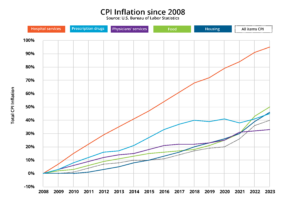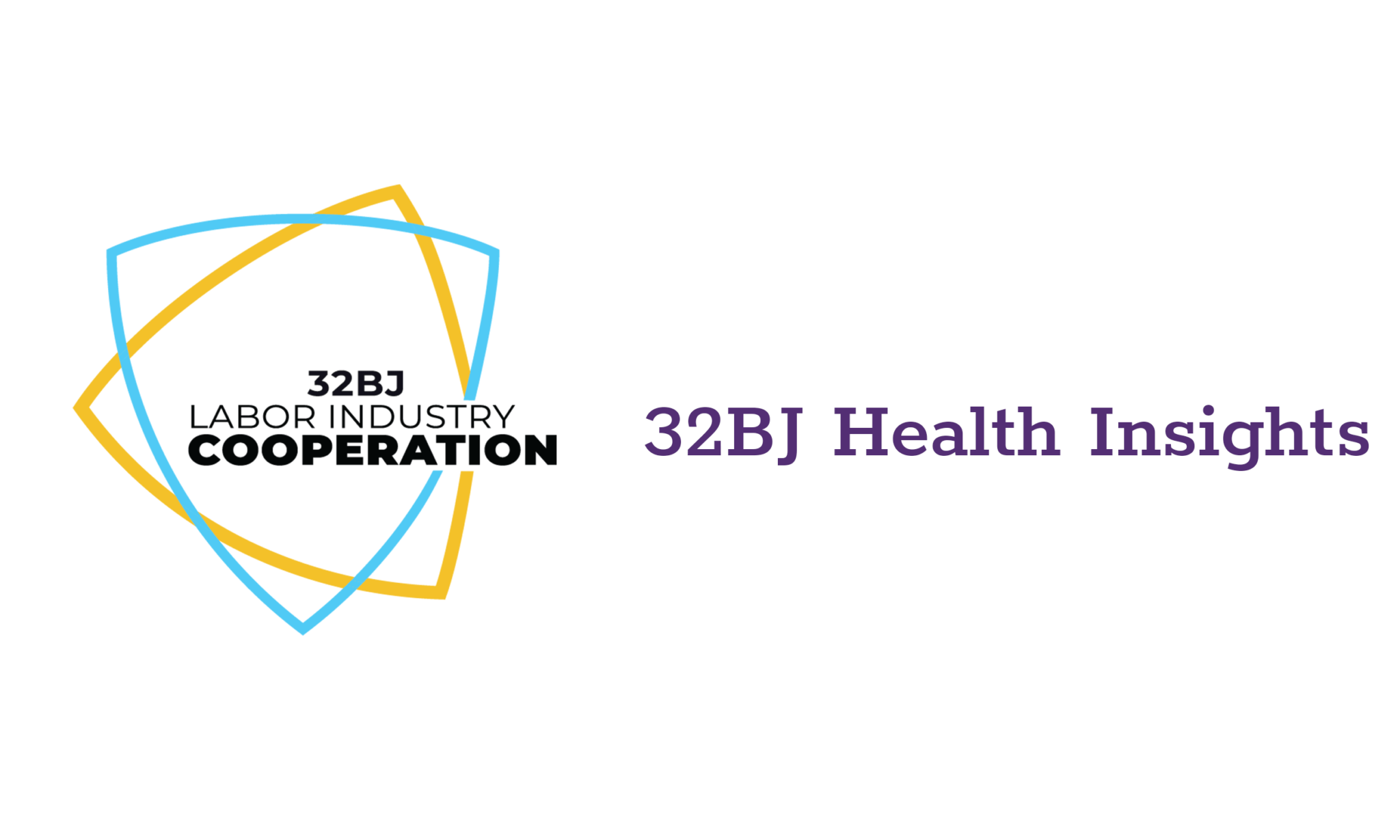Research & Resources
32BJ Health Fund Research & Resources:
Publications, Case Studies, Podcasts, and Videos
The 32BJ Health Fund understands that the American healthcare system is neither sustainable nor equitable. The Health Fund’s passion to make healthcare work for working people is grounded in its decades of expertise and its pioneering drive in demonstrating that change is possible through evidence-based decision-making.

One of the Health Fund’s strategic pillars is to maintain a low healthcare spend while ensuring SEIU 32BJ members’ easy access to high-quality, affordable care with no premium sharing. The Health Fund achieves this strategy through its innovative plan design and its special, $0- and low-copay benefit programs.

Relentless Health Value Podcast
Getting your data is the critical first step for employers and unions in understanding healthcare usage and costs and figuring out how to reduce spending without sacrificing access to high-quality care for employees and members. In this encore release, host Stacey Richter spoke with 32BJ Health Fund Director Cora Opsahl about how the Health Fund has invested in using data to reduce costs, forecast healthcare trends, and improve financial solvency. In 2022, the 32BJ Health Fund made multiple benefit changes that saved the plan more than $35 million.
While hospitals maintain outsized power and influence in the healthcare marketplace, among the critical benefit changes that the 32BJ Health Fund implemented in 2022 was the removal of the NewYork-Presbyterian hospital system from its network. Director Cora Opsahl discusses how the Health Fund made such a transformative decision.
The challenges for a self-funded health plan like the 32BJ Health Fund become increasingly hard when faced with anticompetitive terms in the contractual agreements between third-party administrators and hospitals. To solidify and protect its rights as a plan sponsor when going to RFP, Director Cora Opsahl explains how the Health Fund put forth a model contract that each bidder was required to redline—giving it greater visibility and control throughout the process.
Even so, the contract between Aetna and NewYork-Presbyterian hospital system, which the Health Fund had removed from its network with Anthem in 2022, stood in the way of implementing the favorable terms the 32BJ Health Fund negotiated with Aetna when the Fund’s ability to keep NewYork-Presbyterian out of network was conditioned on an unsubstantiated demand for payment.
Director of Policy & Strategy Claire Brockbank continues the discussion about how the 32BJ Health Fund increased its leverage when going to RFP with a contract of its own design and shares other insights—such as the importance of asking one’s broker for a 408(b)(2) disclosure form—that can help even small, self-insured employers become savvy purchasers in a playing field that is anything but level.
The 32BJ Health Fund has open sourced its contract for any purchaser looking to stack the deck in their favor.
Catalyst for Payment Reform Webinars
32BJ Health Fund Director Cora Opsahl spoke at the October 31, 2023, kickoff for Catalyst for Payment Reform’s webinar series, Pioneers of Progress.
- 32BJ Health Fund’s Journey to Remove NewYork-Presbyterian from Their Network
- Healthcare Cost Savings Turn Into Largest Wage Increase in Union History
- Using Data to Be as Effective as Possible
A How-to Video for Employers and Other Healthcare Purchasers
This video was created for the 32BJ Health Fund’s 2022 Fall Conference to help employers and other healthcare purchasers determine how much they are paying for healthcare and to show them what they can do right now to reduce their hospital spending.
Peer Research & Resources:
What We're Reading and Listening to
Like many of you, our team is inundated with information, so we often compare notes about what made it to the top of our lists. Here are some of our ongoing favorites as well as current material we’re paying attention to. We’re always open to suggestions on things that you think are worthwhile.
The Health, Medicine & Society Program of the Aspen Institute convened a Working Group of health policy experts—including Claire Brockbank, director of Policy & Strategy at the 32BJ Health Fund—to publish Ensuring Access, Affordability, and Quality in the Age of Healthcare Consolidation: Lessons Learned and Insights for the Future, which examines the correlation between increasing consolidation of large hospital systems and increasing healthcare prices and overall spending.
The Working Group report explored the following strategies to foster marketplace competition and improve affordability and access to care:
- Emphasize transparency, value, stakeholder education, and analytic capacity
- Strengthen federal and state regulations and enforcing them more vigorously
- Reduce financial incentives for health systems to consolidate
- Bar anticompetitive provisions in contracts between health systems and payers
- Unwind consolidation where it is already embedded
- Develop innovative care delivery models in sparsely populated areas
- Fill data and research gaps on quality, access to care, and the labor market
KFF participated in the report’s publication, and the Arnold Foundation supported the initiative.
The national think tank Third Way published a new report, Tale of Two Hospitals: Why Some Hospitals Succeed and Others Do Not. Hospitals often take the position that they need to increase their prices to cover their losses on Medicare and Medicaid, but the data Third Way examined tell another story altogether:
- One-third of hospitals make money on Medicaid
- 9% of hospitals pad their bottom line by collecting more money for charity than they pay out
- More than half of hospitals make money on Medicare
Two hospitals illustrate the difference in patient outcome with implications for hospitals across the country:
Top-ranked Duke Regional in North Carolina makes money on Medicare and delivers high-quality, equitable care, while bottom-ranked Mercy Hospital Southeast in Missouri loses money on Medicare and delivers poor-quality care.
Georgetown University’s Center on Health Insurance Reforms (CHIR), in partnership with West Health, has released a study on the heightened national interest in reforming hospital outpatient facility fees.
Key takeaways include:
- There is widespread bipartisan support for facility fee regulation: As of July 1, 2024, 20 states have adopted at least one reform strategy
- While most states are implementing incremental reforms, Connecticut leads the country with the scope and comprehensiveness of its facility fee reforms
- Momentum for new legislation is building despite industry opposition
There are a number of excellent sources of ongoing information that we rely on to stay informed.
Axios and Politico both send out a newsletter every morning—a great way to start the day.
KFF (Kaiser Family Foundation) and Catalyst for Payment Reform both provide trusted information that we check on an ongoing basis.
Stacy Richter’s Relentless Health Value podcast is an endless source of motivation and introduces us to fellow travelers working to transform healthcare.
Sage and NASHP have developed two reliable tools that provide insight into hospital price, cost, and quality data.
Health Insurers Don’t Want You to Know Where Your Money Is Going
Policies to Hold Nonprofit Hospitals Accountable
How Unions Act as a Force for Change in Health Care Delivery and Payment, Commonwealth Fund
Hospital Charity Care: How It Works and Why It Matters
Hundreds of Hospitals Sue Patients or Threaten Their Credit, a KHN Investigation Finds. Does Yours?
Even though these are a bit dated, below are a few comprehensive and New York-specific reference materials that we rely on.
The Big Picture VI: New York’s Private and Public Insurance Markets, United Hospital Fund

